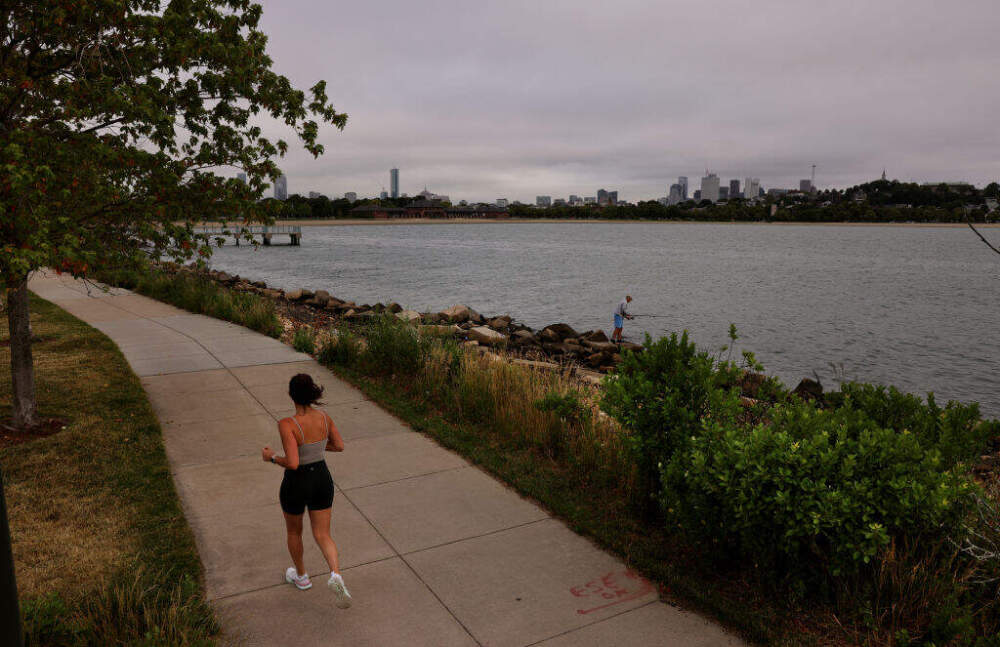Advertisement
Commentary
The waterfront belongs to all of us

Mayor Wu has declared a heat emergency. Worcester Public Schools ended the academic year early because of this week’s forecast. Brookline, Quincy and a host of other communities have opened cooling centers. We’re in a heat wave, and extreme heat is bad for our health; for some people it can be downright dangerous.
One wellness solution when facing a summer scorcher? Head to the waterfront.
The cool air that lingers over water can make for more comfortable — and healthier — conditions while temperatures inland soar.
It seems that the doctors of yesteryear were on to something when they prescribed “sea air” as a cure for ailing patients. Today, we know that the health benefits of the waterfront (AKA “blue space”) are plentiful. In addition to cooling us when the mercury rises, waterfronts improve our social connectivity, increase our likelihood of engaging in physical activity and boost our mood while lowering stress. But we need to ensure our waterfronts are accessible to all.

Like many people, I struggled with my mental health during the height of the pandemic. I was a graduate student at the time, trying to juggle the stress of daily life amidst the chaos of world events. I needed an outlet at a time when outlets were hard to find. Enter Boston’s Harborwalk, which gave me access to 43 mind-clearing miles. Walking along the waterfront became a crucial retreat, a place to take a break. And I soon realized that those mood and stress management benefits extended to many things. The waterfront offered places of comfort where I could socialize with friends, discover a perfect spot to read and find a breezy haven in the dog days of summer.
The health benefits I’ve enjoyed should be available to everyone. Yet we know that too many people don’t think the waterfront is for them.
A 2021 MassINC poll of likely voters in Boston found that just over half of people visited the waterfront at least “sometimes” in a given year. The most frequent visitors were those with higher incomes. In some communities, visiting isn’t the issue — it’s simply having a place to go. Private development along the waterfront can reduce public access (when not handled thoughtfully), influencing people’s perceptions of whether they belong or are welcome in a space. In Chelsea, for example, the waterfront is overwhelmingly industrial. The space is a workplace, not a refuge. Still, a survey of Chelsea residents reveals that there is a desire for walking paths, open space and recreational usage along the water, especially for young people. Chelsea residents want the benefits of blue space, and to have access that mirrors other communities in the region.

Overcoming the perception that residents aren't welcome, while connecting people to the health and wellness benefits of the waterfront in and around Boston, is a central focus of several local organizations. The Charles River Conservancy organizes City Splash as part of the Charles River Swimming Initiative, a community event creating the opportunity for public swimming in the river.
Boston Harbor Now offers a robust web tool to help pedestrians navigate the Harborwalk, including interactive information about available seating, restrooms and drinking fountains. They also advocate for the inclusion of public green space in new waterfront developments, so even waterfronts cited on private property maintain public access. Greenroots leads climate resilience planning, design and implementation in environmental justice communities to push policymakers to consider equity and accessibility when preparing for waterfront flooding. They are also fighting to keep the waterfront safe and clean so that pollution doesn’t threaten the well-being of local residents.
This week, the 60+ member Coalition for a Resilient and Inclusive waterfront is hosting Waterfront Wellness Week, a 10-day series of public health and wellness events that bring people to the waterfront with an emphasis on inclusion and health. From Juneteenth celebrations at the Boston Children’s Museum and the ICA, to a day on Spectacle Island with James Hill of Java with Jimmy, from fitness classes on the Greenway to a youth track meet at Moakley Park, these events reminds us of the many ways our health is boosted by a waterfront that belongs to all of us.
Advertisement
Activating the waterfront shouldn’t be limited to one beautiful (if sweltering) week in June. It has to be a year-round endeavor. At both the individual and societal levels, prioritizing and engaging with the waterfront will allow us to become healthier, happier and more connected to ourselves and to each other.
Ian Karby, doctor of physical therapy, is a health and wellness advisor to the Coalition for a Resilient and Inclusive Waterfront.